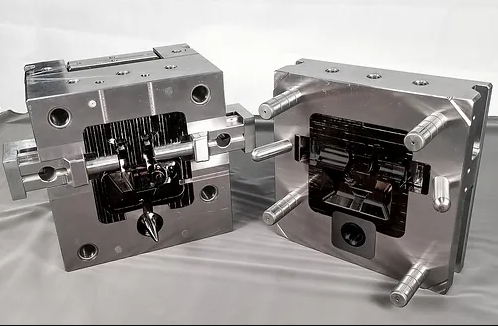Introduction:
In the world of manufacturing, die casting molds play a crucial role in ensuring precision and efficiency in the production process. A high-quality die casting mold is essential for creating accurate and consistent products. This article aims to explore the importance of developing such molds and the various factors that contribute to their quality.
1. Understanding Die Casting Molds:
Die casting molds, also known as dies, are custom-made tools that enable manufacturers to produce complex metal parts with high precision. These molds are typically made from hardened steel and consist of two halves, known as the \”cover\” and \”ejector,\” which are designed to fit together tightly. The cavity within the mold is shaped according to the desired product, allowing molten metal to be injected and solidified into the desired shape.
2. Importance of High-Quality Molds:
a. Precision: A high-quality mold ensures the accurate replication of the desired product. It minimizes variations and defects, resulting in consistent dimensions and surface finish. This precision is vital for industries such as automotive, aerospace, and electronics, where tight tolerances are essential.
b. Efficiency: A well-designed mold optimizes the production process, reducing cycle times and improving overall efficiency. It allows for faster cooling and solidification of the metal, enabling higher production rates. Additionally, high-quality molds require minimal maintenance and repair, reducing downtime and increasing productivity.
3. Factors Affecting Mold Quality:
a. Material Selection: The choice of mold material is critical. Hardened steel, such as H13, is commonly used due to its high strength, wear resistance, and thermal conductivity. The selection depends on factors like the expected production volume, the type of metal being cast, and budget constraints.
b. Mold Design: A well-designed mold considers factors such as part geometry, draft angles, gating system, and venting. It ensures the proper flow of molten metal, minimizes the risk of air entrapment or shrinkage defects, and allows for easy ejection of the finished product.
c. Mold Maintenance: Regular maintenance is crucial to preserving mold quality. Proper cleaning, lubrication, and inspection help prevent wear and damage. Additionally, routine maintenance detects potential issues early on, reducing the risk of costly repairs or mold failure during production.
4. Advanced Technologies in Mold Development:
a. Computer-Aided Design (CAD): CAD software allows engineers to design complex mold geometries with precision. It enables simulation and analysis of the mold\’s behavior, optimizing factors like cooling channels, runner systems, and ejection mechanisms.

b. 3D Printing: Additive manufacturing, specifically 3D printing, has revolutionized mold development. It allows for the rapid prototyping of molds, reducing lead times and costs. Additionally, 3D-printed molds enable the production of intricate and customized designs that were previously challenging to achieve.
c. Mold Cooling Systems: Efficient cooling is crucial for maintaining part quality and reducing cycle times. Advanced cooling systems, such as conformal cooling, utilize complex channels designed to follow the shape of the part. This ensures uniform cooling and minimizes distortion or warping.
Conclusion:
Developing a high-quality die casting mold is a key aspect of achieving precision and efficiency in manufacturing. The right material selection, proper mold design, and regular maintenance contribute to producing consistent and accurate products. Incorporating advanced technologies like CAD, 3D printing, and innovative cooling systems further enhances mold quality and optimizes production processes. By prioritizing the development of high-quality molds, manufacturers can ensure the delivery of reliable, high-performance products that meet customer expectations.
-

- Մագնեզիումի համաձուլվածքի Thixomolding ուժային խարույկի պատյան
-

- OEM բարձր ճնշման ձուլման մագնեզիումի համաձուլվածքի շրջանակ հեծանիվների համար
-

- Մեծածախ մագնեզիումի խառնուրդ մանկական ցիկլ 3-ից 5 տարեկան 12 դյույմ մանկական ցիկլ OEM էժան
-

- Factory Custom China Bmx Cycles Road Sport Kids Bicycle 12 16 18 20 Inches Cycle Mtb Երեխաների համար 6-10 տարեկան
-

- OEM ձուլման ծառայության մետաղական բաղադրիչներ Macbook-ի միջինից
-

- Բարձր ճշգրտության մագնեզիումի թիքսոմոլդինգ բաղադրիչների նոութբուքի պատյան Ա

 0086-750-5616188
0086-750-5616188 +86 13392089688
+86 13392089688 sales@zhongmei-tech.com
sales@zhongmei-tech.com







